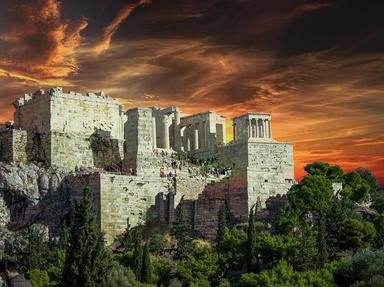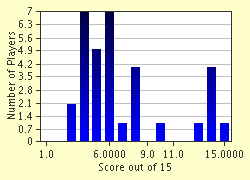Quiz Answer Key and Fun Facts
1. In 370 BC, Philip II's father, Amyntas III, died and Philip's brother, Alexander II, succeeded to the Macedonian throne. Alexander was forced to send Philip as a hostage to a Greek city to the south. Name this Greek city.
2. Perdiccas was killed in battle with the Illyrians. Amyntas IV succeeded him. What was Philip's new position?
3. After securing the borders from the Paeonians in the north and the Illyrians in the west, Philip moved to secure this Greek city along the Strymon River for his control. Name the city.
4. Philip married Alexander the Great mother, Olympias, in 357 BC,and the future king was born in 356 BC. Where was Olympias from?
5. Also around 356 BC, Philip was involved in a complicated war and diplomacy with Athens and their allies over parts of Thrace and the Chalcidice region. This region was important to him for reasons of diplomacy.
6. One component of Philip's new mlitary was the Royal Companion Cavalry. What was the Greek name for this cavalry?
7. Less well known is Philip's introduction of siege equipment like towers and catapaults. What historical figure heavily influenced siege warfare in this period?
8. Around 354-353 BC, Philip and his army were invited by Larissa to defend Thessaly(except Pherae) from Phocia's mercenary army. Name the war.
9. From 352-346 BC, Philip played no active role in the Third Sacred War but instead turned on this former ally. Name the ally.
10. After the war with Olynthus, Philip let Greece know that he would be moving south again. Athens, Sparta and Phocia moved to block him at this pass. Name the pass.
11. With things settled to his liking in Greece, Philip turned north again to Thrace around 340-339 BC to besiege these two cities. Name the cities.
12. At the Battle of Charoenea, Philip put his son Alexander in charge of the Companion Cavalry on the left flank. What force was facing Alexander's on the Greek right flank?
13. After Charoenea, Philip and the Greeks entered into negotiations and formed the League of Corinth. The League gave Philip a key role. Name the role.
14. The primary reason for the League was what?
15. Also in 336 BC, at his daughter Cleopatra's wedding to the King of Epirus (her uncle), Philip was assassinated. Name the assassin.
Source: Author
Craterus
This quiz was reviewed by FunTrivia editor
bloomsby before going online.
Any errors found in FunTrivia content are routinely corrected through our feedback system.

